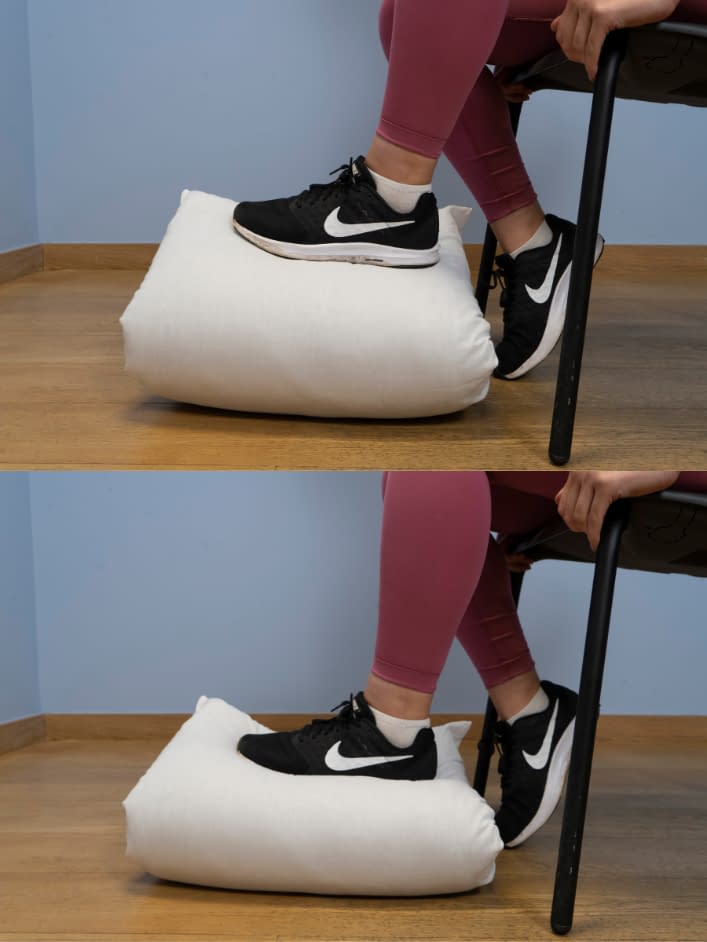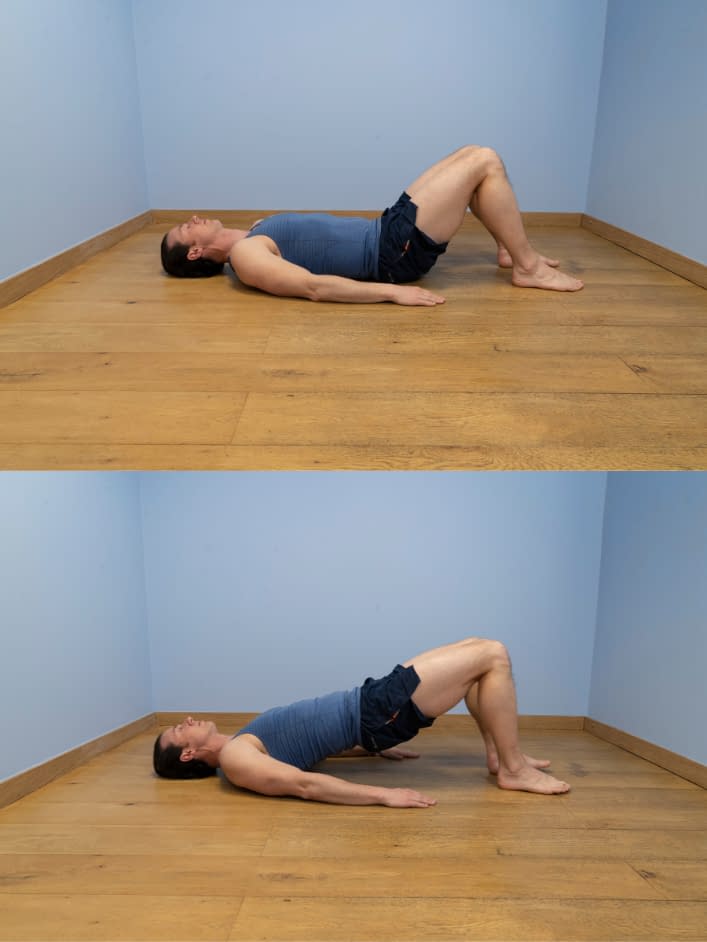Hip Osteoarthritis Early Exercise Programme
Aim to perform this programme a minimum of once per day unless prescribed otherwise. As with any new exercise, start slowly (repetitions as able) and build up as you are able within the guidelines below.
Pain should not exceed 4/10 whilst completing this exercise programme.
1. Isometric Pillow Press
- Sit in a firm, stable chair and place a pillow on the floor under the foot of the targeted leg.
- Push the foot down in to the pillow using the thigh and buttock muscles.
- Hold the squeeze at around 70% of your maximum effort, pain should remain at or below 4/10 on your pain scale.
2. Supported squat
- Start with the feet shoulder width apart and hold onto a stable object (e.g., banister or kitchen sink) at about waist height.
- From this position bend your knees and sit backwards as if you are sitting into a chair.
- As you do so lean slightly forwards at the hips so that your head stays over your feet.
- Make sure that your weight is going through your heels at all times.
- Go as low as you feel comfortable but no lower than your thighs parallel with the floor.
3. Bridge in lying
- Lie on your back on the floor or bed with your knees bent at 90 degrees and your feet on the floor and your arms down by your side.
- Lift your hips off the floor. Lift as high as you feel comfortable but no higher than a straight line between hips, knees and shoulders.
- If you feel discomfort, then try squeezing your tummy and bum muscles before starting the lift.
- Hold at the top for 5 seconds.
- Push up as far as you feel comfortable, and pain and stiffness allow.
We recommend consulting a musculoskeletal physiotherapist to ensure exercises are best suited to your recovery. If you are carrying out an exercise regime without consulting a healthcare professional, you do so at your own risk. If you have any concerns whilst completing these exercises, please contact a healthcare professional.
More Plans
In the intermediate stages, rehabilitation should look to shift from predominantly stretching exercises to incorporate more strength-orientated exercises. Commonly these begin with more simple exercises involving the muscles that support the hip, before aiming to become more functional (relating to activities of daily living) in the later stages (7, 8). Pain should not exceed 4/10 on your perceived pain scale whilst completing this exercise programme.
- 0
- 1
- 2
- 3
- 4
- 5
- 6
- 7
- 8
- 910
By this point, you will have worked on restoring the range of motion in the affected hip and strengthening the supporting muscles. This is the time to make the programme more specific to activities of daily living such as walking, climbing stairs and bending amongst others. Pain should not exceed 4/10 on your perceived pain scale whilst completing this exercise programme.
- 0
- 1
- 2
- 3
- 4
- 5
- 6
- 7
- 8
- 910


